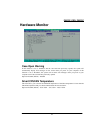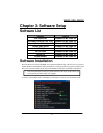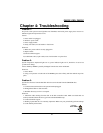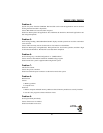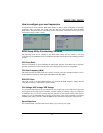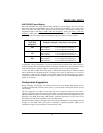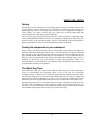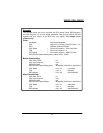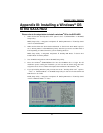
PX875P PRO/ PX875P
52
Appendix I: Over Clocking
Important
efore you attempt to overclock your system, we strongly recommend that you obtain a thorough
derstanding of all of the variables, procedures,
B
and the potential risks associated with overclocking.
ecause we cannot control of all of the possible variables that exist (i.e. memory, AGP card, user
ooling apparatus etc), we cannot assume responsibility from damage to any
of certain components of your system above and
me or all of the following:
CPU Speed
e Bus) frequency
celerated Graphics Port) frequency
ulate your new frequencies.
lated using individual formulas.
or each of the items above there
equency” to determine the final
.
PU Speed = CPU Host Frequency * CPU Clock Ratio
= CPU Host Frequency * FSB multiplier
= CPU Host Frequency * DDR:CPU Ratio
PU Host Frequency / AGP divisor
RC frequency = CPU Host Frequency / SRC divisor
ur system for overclocking is simply understanding the formulas above and going into
Setup Utility and changing “DDR:CPU Ratio”, “CPU Clock Ratio” and “CPU Host
ltiplier for Intel based mainboards will always be fixed at 4. The AGP, PCI and
ncies are all determined by the BIOS setting AGP/ PCI/ SRC Speed Setting.
un
B
configurations, c
components of your system due to overclocking.
What is overclocking?
Overclocking is accelerating the processing speed
beyond what those components were rated for. With this mainboard, depending on the model, you
may be able to overclock so
FSB (Front Sid
DDR (Memory) frequency
AGP (Ac
PCI (Peripheral Connect Interface) frequency
SRC (Serial Reference Clock) frequency
How to calc
With this mainboard, the frequencies mentioned above are calcu
These formulas have a single “CPU Host Frequency” in common. F
is also a multiplier or a divisor that is applied to the “CPU Host Fr
frequency for each component as shown in the following formulas
C
FSB frequency
DDR frequency
AGP frequency = C
PCI frequency = CPU Host Frequency / PCI divisor
S
Configuring yo
the BIOS
Frequency”.
Note that the FSB mu
SRC freque




